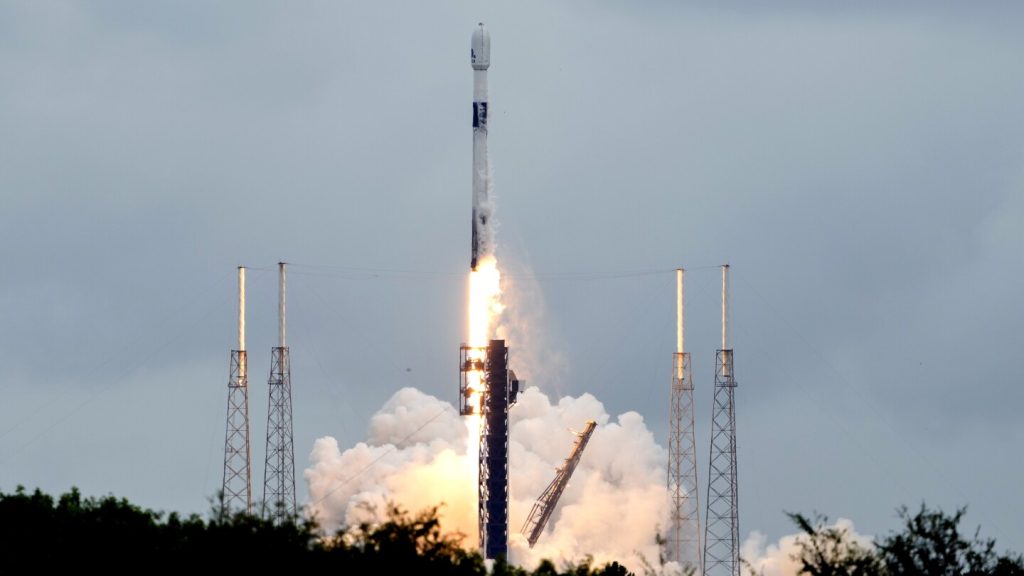On a momentous day in Cape Canaveral, Florida, the European Space Agency (ESA) launched its Hera spacecraft as part of a pioneering planetary defense program aimed at investigating the aftermath of a cosmic collision. This mission is the second phase of an intricate test to determine the feasibility of deflecting an asteroid that might pose a threat to Earth. This journey marks a significant milestone in space exploration, wherein Hera will scrutinize the small, harmless asteroid Dimorphos, which had previously been hit by NASA’s Double Asteroid Redirection Test (DART) spacecraft. Scientists celebrated the successful launch, underscoring its potential to inform future asteroid mitigation strategies. DART’s impact had successfully shortened Dimorphos’ orbit around its larger companion asteroid, Didymos, and Hera’s investigative mission hopes to delve deeper into the effects of that collision.
The primary goal of Hera is to conduct a detailed analysis of the impact’s results. Researchers are eager to observe the changes induced by DART’s collision to assess how effectively the mission altered Dimorphos’ trajectory. The hope is that such insights will guide future missions to deflect potentially hazardous asteroids. According to University of Maryland astronomer Derek Richardson, gathering detailed information from Hera will be essential for planning future mitigation efforts should they become necessary. Scientists are particularly interested in understanding whether DART left behind a crater or if Dimorphos has significantly changed shape due to the impact, which is suggested to have transformed its appearance from something similar to a flying saucer into a structure that may resemble a kidney bean.
In addition to analyzing surface features, Hera will also investigate the aftermath of the collision, where debris from Dimorphos was ejected into space. Following DART’s impact, boulders and rubble were sent flying, providing additional momentum that further altered the asteroid’s orbit. As flight director Ignacio Tanco pointed out, the environment that Hera will encounter remains uncertain due to the possibility of lingering debris. This highlights the mission’s inherent risks but also its essential purpose: to gather firsthand data about the collision’s aftermath. European officials are characterizing this endeavor as a “crash scene investigation,” whereby Hera will collect critical scientific and technical information necessary for future planetary defense strategies.
Hera, equipped with a variety of scientific instruments, is set for a two-year journey that includes a flyby past Mars to gain a gravity assist before arriving at Dimorphos by late 2026. Its operational strategy involves gradually approaching the asteroid pair, where it will need to survey Dimorphos for at least six months. Scientists aim to ascertain various parameters, including the moonlet’s mass, shape, and composition, as well as its orbital characteristics. New insights will shed light on the changes that occurred after DART, which scientists anticipate might include a tighter, oval-shaped orbit that could suggest an entirely new tumbling motion for Dimorphos.
In addition to the primary spacecraft, two small Cubesats will accompany Hera for more focused investigations of Dimorphos. These shoebox-sized satellites are designed to carry out drone-like inspections, using radar instruments to peer beneath the asteroid’s boulder-strewn surface. This data could confirm theories about Dimorphos’ origin and its relationship with Didymos. The Cubesats also have a challenging mission of attempting to land on the moonlet after their assessments, which could be complicated if Dimorphos’s tumbling motion proves more chaotic than anticipated. Hera’s mission may culminate with a descent onto Didymos, showcasing the dual nature of the operations being executed.
Importantly, neither Dimorphos nor Didymos currently pose any threat to Earth, which was a critical factor in NASA’s decision to select this pair for the demonstration of asteroid deflection technology. Both asteroids are remnants from the early solar system, with their origins dating back around 4.6 billion years. Located between Mars and Jupiter, asteroids undergo dynamical processes that can result in some becoming near-Earth objects. As of now, NASA’s catalog identifies over 36,000 near-Earth objects, of which more than 2,400 are classified as potentially hazardous. This knowledge underscores the need for continued research and proactive strategies for planetary defense against cosmic threats.
The Hera mission represents a monumental step forward in humanity’s understanding of planetary defense mechanisms, offering crucial insights into how we might one day shield our planet from potential asteroid impacts. Support from institutions like the Howard Hughes Medical Institute’s Science and Educational Media Group highlights the public interest and investment in scientific endeavors aimed at preserving Earth’s safety. As Hera embarks on its two-year mission, the scientific community and space enthusiasts alike await the wealth of knowledge that will come from this ambitious exploration of the cosmos.

